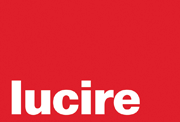|
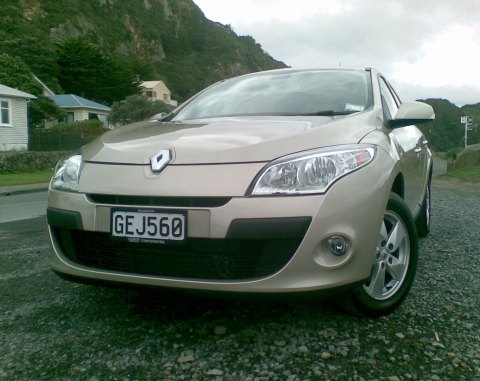
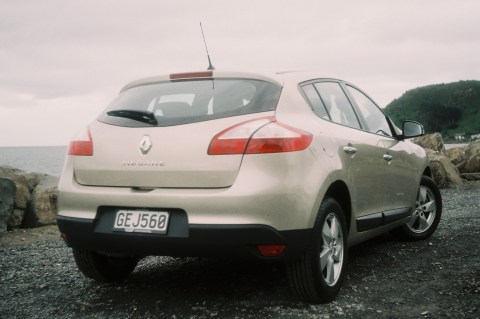
Behind the scenes A hint of the Mégane II’s bustle can be seen in the latest model
The desktop wallpaper is, in a 21st-century context, the equivalent of the bedroom wall. Boys—even middle-aged ones—will put there cars that they like and perhaps aspire to own.
Confession: before I had an Aston Martin Rapide as my current wallpaper (it’s a lovely photo), I had a Renault Mégane III. Granted, it was the coupé version, rather than the more commonplace five-door hatchback, but there was something inherently right about the new model’s styling.
Mégane II caused shockwaves a decade ago with its bustle back, but, despite that, it led Renault to sales leadership some months in Europe, even beating the Volkswagen Golf on its home turf. It turns out that even German buyers were bored of their own, and it was not uncommon at the time to see IIs throughout the Continent. This magazine even tested a II in 2006, namely the estate, making it the first Turkish-built car driven by Lucire.
Come to the end of the decade and the Mégane III is fluidic and dynamic where the previous was upright and angular. It’s part of Renault’s quest for sales’ leadership in the C-segment: the feeling was that while it was adventurous to indulge in unusual shapes such as Mégane II and Avantime, both hatched from a very similar styling theme masterminded by Renault design boss Patrick le Quément, there was a segment of buyers who wanted a degree of conservatism.
This didn’t go down well with some of our European colleagues. The Mégane, they argued, became watered down. But it perhaps highlighted their double standards: the wisdom is, in recessionary times, buyers don’t want unusual, something the press is quite happy to report in retrospect. However, they expect competent and stylish. A healthy balance. And that is where Mégane III delivers.
Hints of the most controversial part of the II are still there. The waistline has been smoothed out to a very pleasing, rising line, curving inward at the back to form the rear lights. The C-pillar does show a 2000s æsthetic with its triangular shape—we noticed this when we parked the Mégane next to one of its rivals, the Mazda Axela. And perhaps, too, like its Japanese rival, the front looks sporting, with a large grille beneath the bumper and only the slightest hint of one above the number plate. Yet it couldn’t, thank goodness, be mistaken for anything else: Renault’s current “face” is distinctive while never being offensive.
Externally, then, the Mégane is nowhere nearly as compromised as the last time Renault decided on sales’ supremacy. That time, the Renault 9 was a dull car, touted as France’s answer to the Toyota Corolla. Set your sights low enough and the buyers won’t follow. In fact, the Mégane does not set its sights low at all: it is a complete package, a new model developed to beat the competition in one of the toughest segments in Europe.
Inside, the dash is familiar to those of us who have driven earlier Méganes. The layout is very familiar: indicator stalk and lights on the left, windscreen wipers and radio controls on the right. The central display is also familiar, though far more detailed this time, providing Bluetooth (phone and audio streaming) and a very logical sound system. The clear digital speedometer works very effectively with its black-on-white display, with details such as fuel economy and radio appearing within the dial. The only gripe might come from those who are used to getting fuel economy readings in old money: the Mégane III insists on litres per 100 km, and we couldn’t find a way to switch it to mpg.
It’s the tone of the plastics that might not be to everyone’s tastes—it’s far more pleasant than either Toyota or Mazda, but those who want more colour might be tempted by the Ford Focus.
The Focus may prove to be the Mégane’s chief rival. Ford, too, has decided to offer a full package and boasts several features to give it that gee-whiz factor in the press (see Lucire issue 28), such as its hillstart assist and, on the Titanium model, its Active Park Assist. But to get all the features, one would have to spend NZ$15,000 more than what Renault is asking. One might miss out on the hillstart aid, which is available in Ford’s Focus Trend model at a shade under NZ$36,000—but for a thousand dollars less for the CVT automatic model we tested, Renault’s standard warranty is five years over Ford’s three; the French are offering 120,000 km over its rival’s 100,000, as part of the Renault Quality Made initiative (www.renault.co.nz/?id=367). The price becomes even more tempting if you prefer shifting gears yourself: the two-litre petrol manual is at NZ$31,990. For automatic fans, Renault is offering a special at the time of writing, with a NZ$2,000 saving on CVT or NZ$3,000 on the otherwise NZ$39,990 Luxury (see www.renaultoffers.co.nz).
The Mégane proves able behind the wheel. It strikes a decent balance between ride and handling: the steering is direct. While light, it’s not vague, and the driving experience has a grown-up feel, in line with how big C-segment cars have become over the years. Admittedly, the Mégane hatch is not going to set pulses racing—but it’s not supposed to. The two-litre unit is willing, and while we felt that the 135 PS 1·9 turbodiesel we tested in 2006 had more low-end torque, it’s refined and quiet. However, in our unscientific economy test, we wound up averaging 9·9 l/100 km (28·5 mpg Imperial), a tad on the high side, something stop–start might be able to help in future models.
We managed to fit a decent amount of shopping in a row in the boot, with plenty of space to spare—it is easily one of the most cavernous in its segment.
The Mégane proves to be one of the most logical, practical choices among the two-litre hatchbacks today. Our view is that it’s instantly more stylish a proposition than anything the Asian brands can muster, especially Toyota’s increasingly dated Auris (Corolla hatch Down Under). The styling doesn’t have the fussiness of the Hyundai i30, which appears overornamented to us. The real question is whether, on style stakes—the reason one reads a Lucire road test as opposed to an Autocar one—it can tempt buyers away from other European brands.
Against the Peugeot 308, its closest rival at home, the Mégane scores a home run. The 308 is softer and duller on all counts, even if we liked it three years ago. The long nose, a must for pedestrian safety, is less well hidden. The 308’s just not a pretty car and it’s not that great to drive any more.
Unlike its predecessor, there’s not an angle in which the Mégane looks unpleasant, and we’ve gone around the car at varying heights to make sure. It’s smart. It’s not necessarily “French”—the Méganes of old had oodles of Gallic charm—but it’s internationally pleasing.
Against the Germans, however, it comes down to preference. The Golf looks solid, but the premium for the base 1·4 turbo is NZ$4,000—a lot for a South African-built car. The Focus is for the bells-and-whistles brigade, with an interior that we rate highly. Mégane, then, is the sensible alternative: stylish, quiet, and safe.
That five-year warranty suggests potential buyers are going to head to Renault based after having made an intelligent decision. No longer will the Mégane buyer be perceived as the adventurous type wanting a quirky car, but the solid and logical—in which case Toyota, Mazda, Nissan et al should have a great deal to fear. •
The Renault Mégane Hatch was kindly lent to us by Gazley Tory Motors, 38 Kent Terrace, Wellington. For more information on the Mégane Hatch, visit www.renault.co.nz/?id=138 or, in Wellington, call Jeff Edwards (Brand Manager) on 021 300-496.
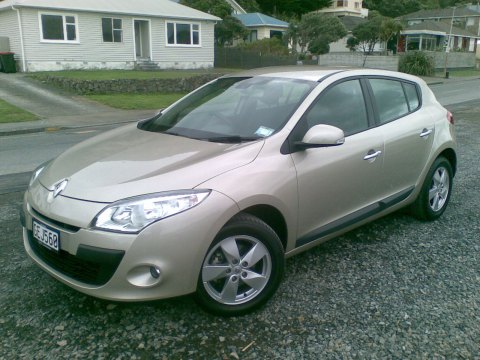
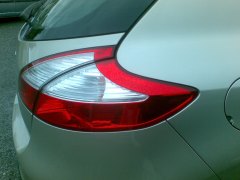 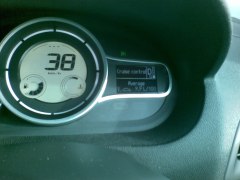
|
 |
The Mégane is nowhere nearly as compromised as the last time Renault decided on sales’ supremacy. In fact, the Mégane does not set its sights low at all: it is a complete package, a new model developed to beat the competition in one of the toughest segments in Europe
Jack Yan is publisher of Lucire.
|
